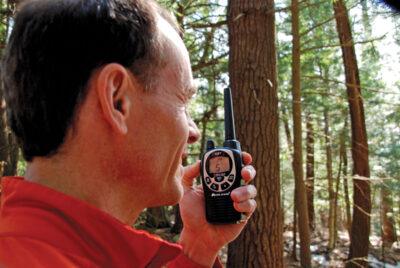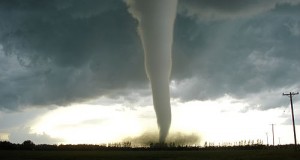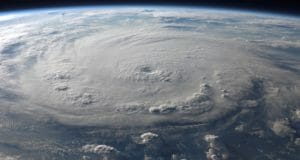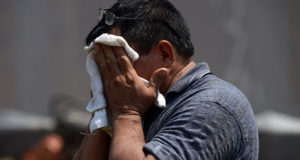When there’s a disaster or a long-term power outage, you need backup communication.
During Hurricane Katrina, more than 70 percent of cell towers went down — and stayed down for weeks. The truth is that cell phone communication is very vulnerable, and if you’re currently relying on cell phones as your primary communication device in the event of that kind of a situation, you need to reconsider.
Cell towers need AC power to operate, and most don’t have an automatic backup system. Even those that have emergency generators are only on during short-term emergencies. Many cell towers are also easily susceptible to physical attack beyond storms.
So, what are your options for backup emergency communication devices? Here are four, all of which are available in battery powered handheld devices:
1. CB Radio
The CB Radio is probably the most available survival communication device on the market, but unfortunately, you’ll want to give it some serious consideration before heading over to the sporting goods store to pick one up. This is because CB radios are very limited in what they can do. The first and foremost limitation: Despite them being widely available, not very many people use CBs. So if you are trapped in a home or an underground shelter or anywhere and need to get in communication with someone, it could be difficult to get word out.
An Amazing Breakthrough In Compact Portable Backup Power — Easily Fits In Your Pocket Or Backpack!
Another downfall to the CB radio: Its overall range is quite limited. Electronic communication needs a lot of power to travel over long distances, but CB radios are fairly weak. Most CB radios only have a potential of four watts out, which isn’t anything to write home about.
The truth about communication devices is that you need to have more than one communication device either in your bug-out bag or your survival kit. CB radios may be limited in what they can do, but they’re definitely some of the most affordable options out there. For that reason, it doesn’t hurt to add one to your kit.
2.Satellite Phones
As a backup communication device, satellite phones are pretty darn good. They are expensive and cost quite a bit more than CB radios. In addition to the high cost of the phone, you also have to pay for service and minutes. But if you can afford to put down the cash and buy one, you should.
Story continues below video
With those statements, you’ve probably noticed something wrong about satellite phones right off the bat; satellite phones need satellites to function. If the satellites go offline in a grid-down situation, as they have before, then you’re out of luck unless you have another communication device at hand.
But in the case that the satellites are up, satellite phones work great. The reception can be a little scratchy, but they tend to be pretty reliable even in emergency situations.
3. GMRS Radio
An average GMRS radio has an advertised range of 20-50 miles, although it’s likely only a few miles on average terrain. It’s affordable, user friendly and simple to use. Many consider them to be a big improvement over CB radios. If there’s a downside to a GMRS radio, it’s that you’ll need to acquire an FCC license to use GMRS frequencies.
4. HAM Radio
You shouldn’t discount HAM radios. Many consider them to be the best backup communication device there is. HAM radio is used by many search and rescue groups, so it has much larger range and will pick up more frequencies as well. Ham radios can also pick up National Weather Service forecasts. Not only can you communicate with someone else, but you can know any incoming weather changes in your area, which can definitely be a valuable asset so you can plan your shelter, fire and movements well in advance.
Consider having a minimum of two backup communications devices. Owning any two of four of these is a great place to start in ensuring that you have proper communication equipment with you when a crisis strikes.
Which backup communication do you think is best? Leave your reply in the section below:
 Off The Grid News Better Ideas For Off The Grid Living
Off The Grid News Better Ideas For Off The Grid Living





